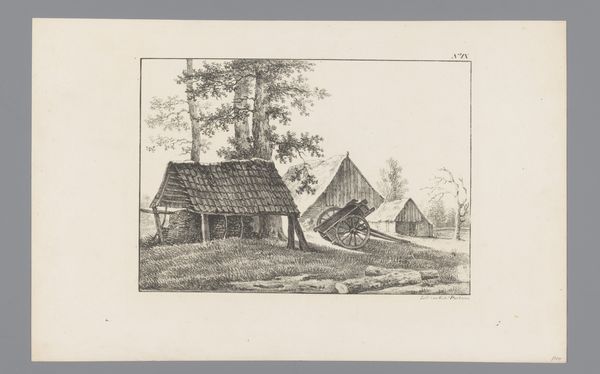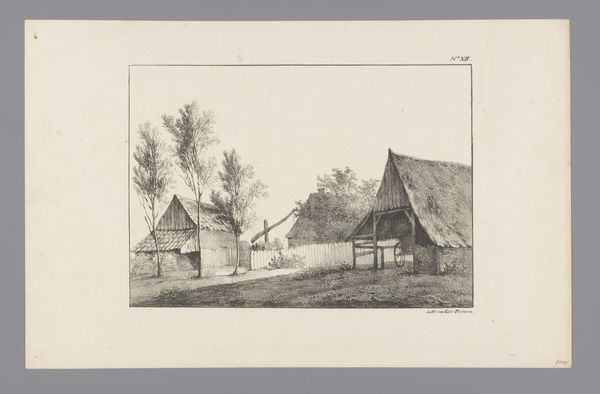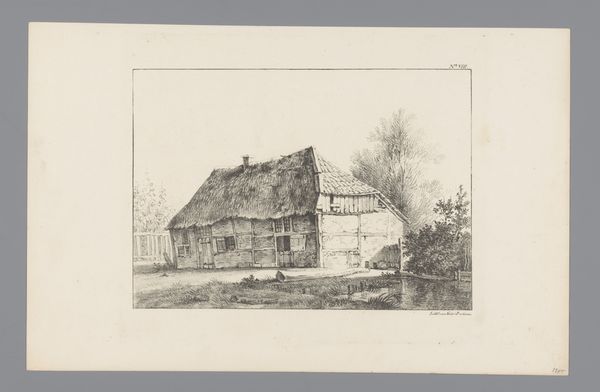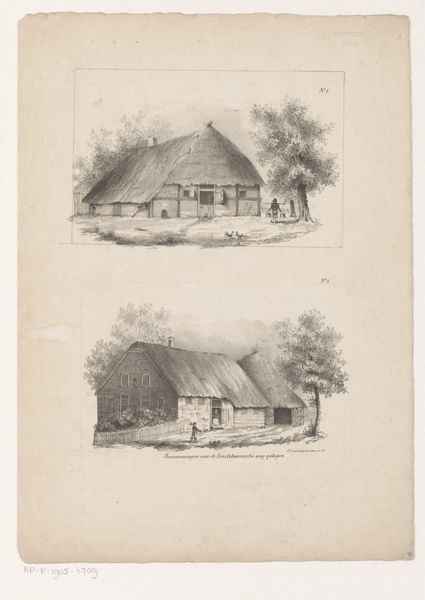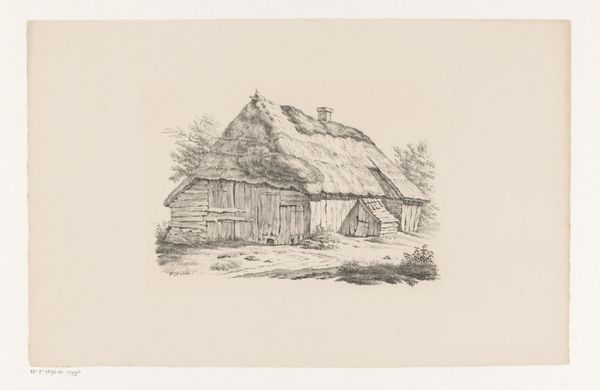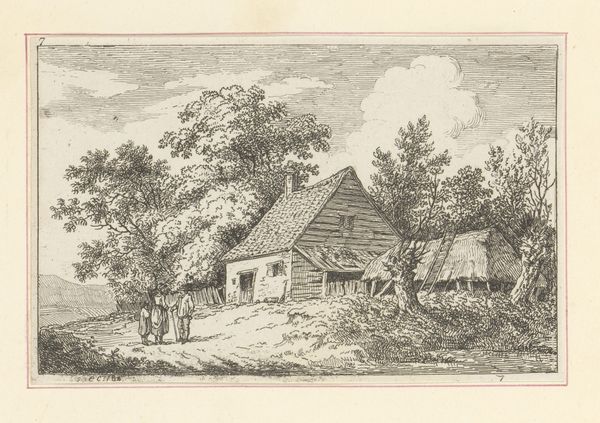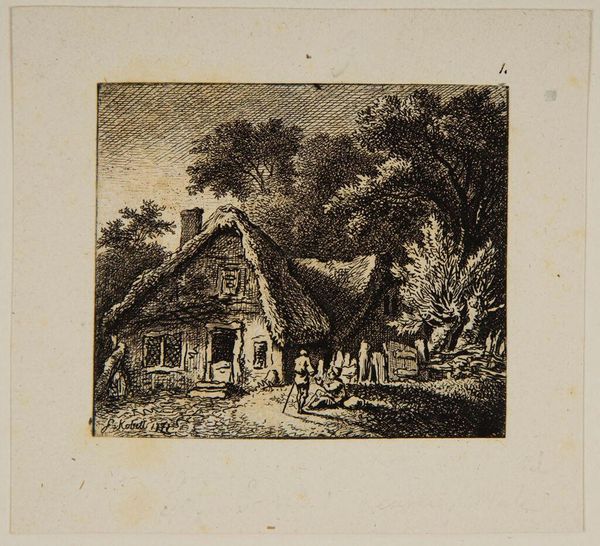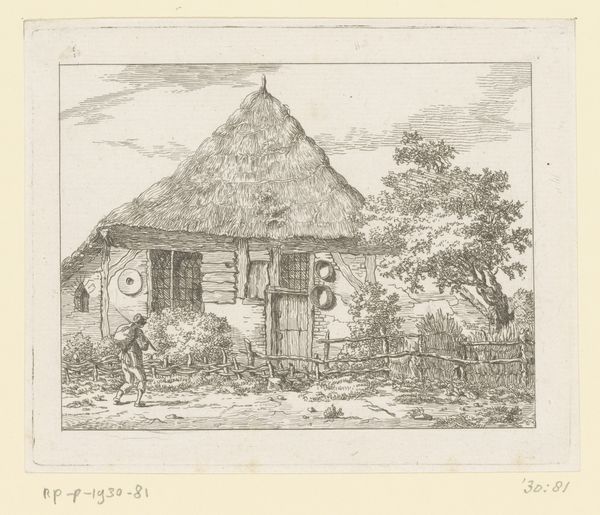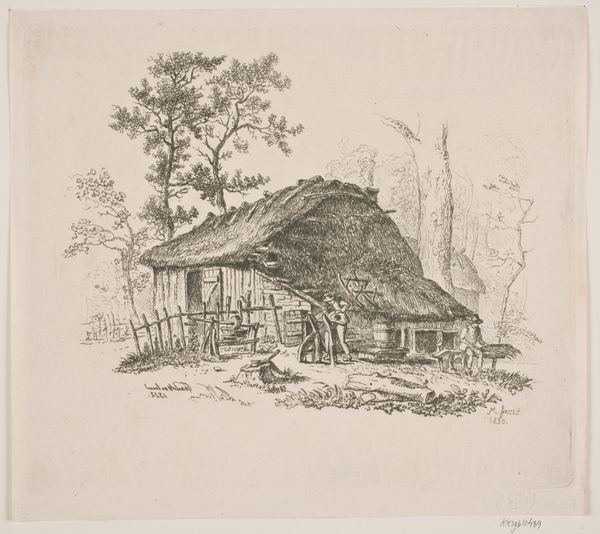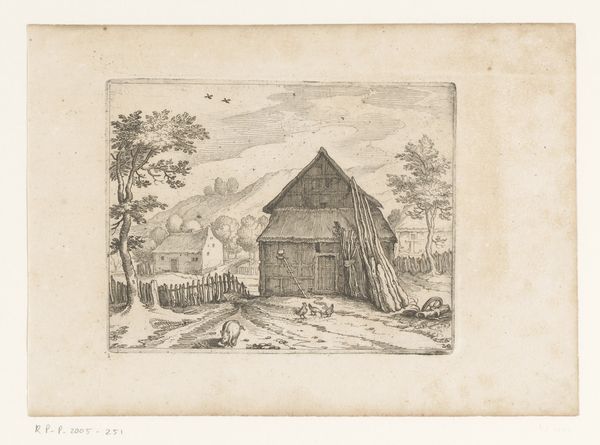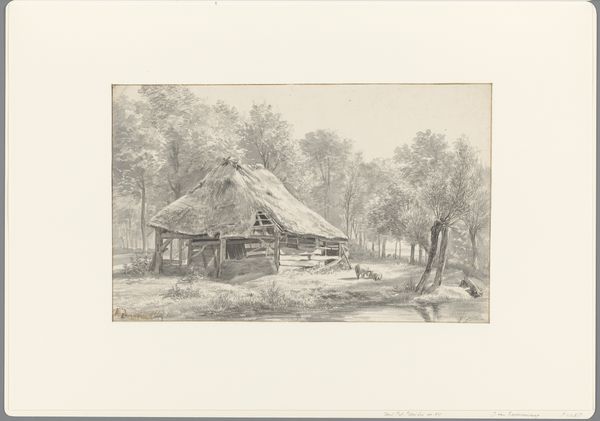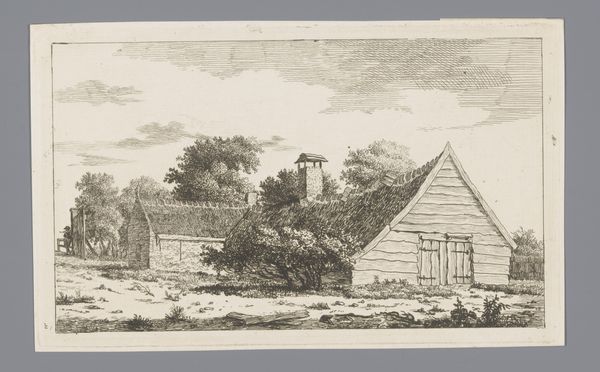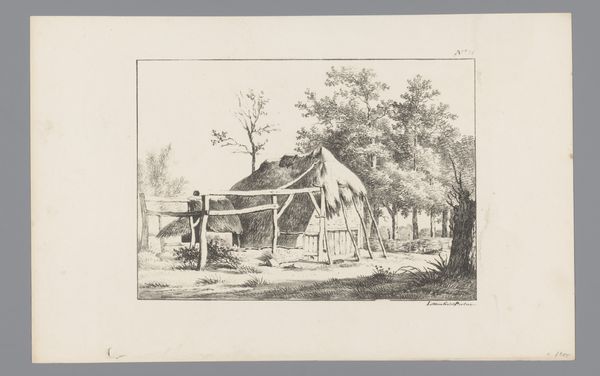
drawing, paper, ink
#
drawing
#
landscape
#
paper
#
ink
#
romanticism
#
genre-painting
Dimensions: height 258 mm, width 403 mm
Copyright: Rijks Museum: Open Domain
Curator: The pen and ink drawing “Boerenwoning,” dating from between 1809 and 1845, by Anthony Oberman depicts a farmhouse. The composition certainly speaks to the romantic ideal of rural life. What strikes you most about it? Editor: I’m immediately drawn to the almost dreamlike quality. It's very detailed, but also feels softened, especially the thatched roof of the farmhouse. It definitely gives off a tranquil vibe, but is there more to it than just a pretty landscape? How do you interpret this work? Curator: Well, let's consider the context. This was a time of immense social and political change, the echoes of revolution, industrial shifts… Romanticism, in part, was a reaction against that. How might the depiction of a simple farmhouse reflect anxieties of the era? Editor: Maybe it represents a longing for a simpler, pre-industrial past, a way of life that was being threatened. The farmhouse becomes a symbol of stability in a time of chaos. Curator: Precisely. And think about who this image might have been created for. Was it intended for people experiencing those changes directly, or perhaps for an elite audience distanced from rural life? The ‘genre painting’ theme hints at accessibility, doesn't it? What does that imply about the target demographic and their possible motivations for appreciating such a scene? Editor: I guess if it’s made for city dwellers, the artwork serves as a sort of idealized fantasy, almost an escape from the grim realities of urban life. It could mask some problematic class and social structures too. Curator: Exactly! By romanticizing rural existence, it obscures the very real hardships faced by the peasantry and serves as a form of social control by reinforcing a particular vision of rural life as inherently peaceful and unchanging. The drawing doesn’t challenge social hierarchies, it almost normalizes them. Editor: That's a totally different angle than how I initially saw it. It’s like the image is doing a lot more work than just showing a farmhouse! Curator: Art is rarely just a pretty picture; it reflects the complex power dynamics of its time. I'm glad we've revealed how such images have contributed to wider political dialogues on gender, identity and social classes. Editor: Absolutely. This deeper understanding of the art's context completely shifts how I see this piece. I’ll remember to challenge what’s not visible in the art!
Comments
No comments
Be the first to comment and join the conversation on the ultimate creative platform.
